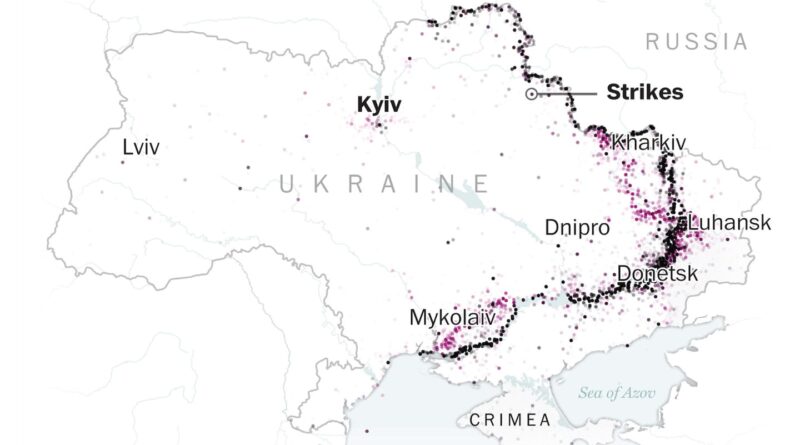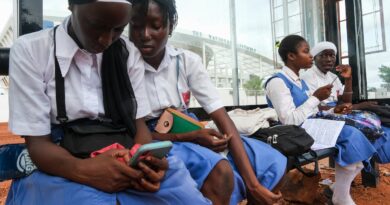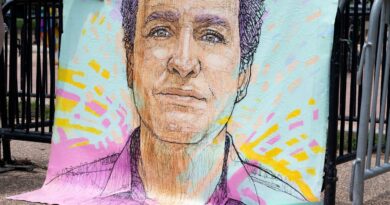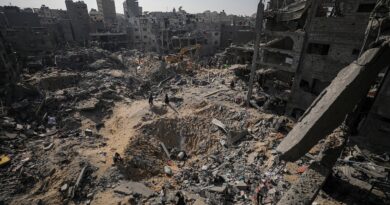Five maps show where the war in Ukraine stands after two years
Strikes in the 1st year of war
Illegally annexed
by Russia in 2014
Note: Drone strikes, shelling, artillery, missile attacks, remote explosive, landmines and IED. Data available from Feb. 24, 2022 to Feb. 16, 2024.
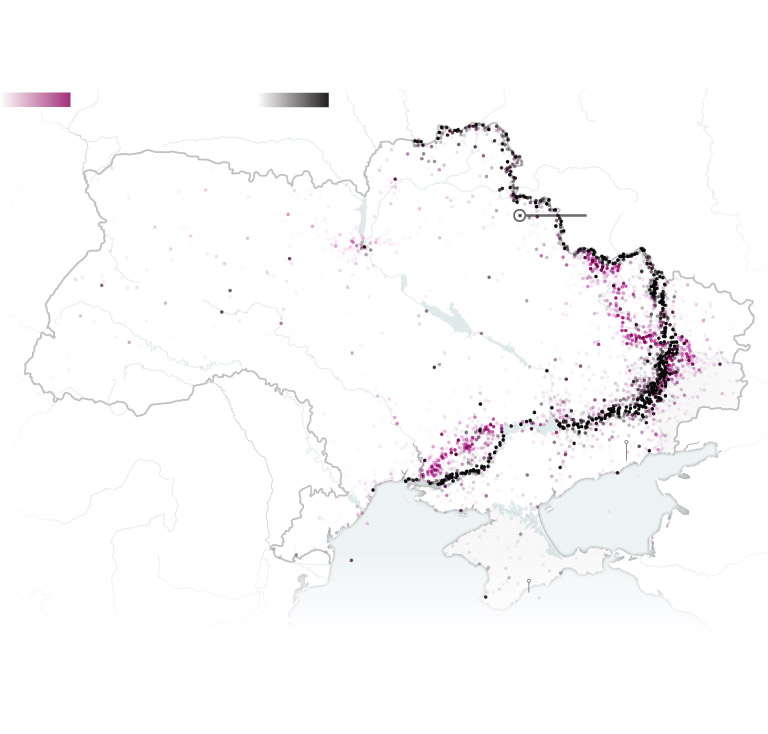
Area held by
Russian-backed
separatists
since 2014
Illegally annexed
by Russia in 2014
Note: Drone strikes, shelling, artillery, missile attacks, remote explosive, landmines and IED. Data available from Feb. 24, 2022 to Feb. 16, 2024.
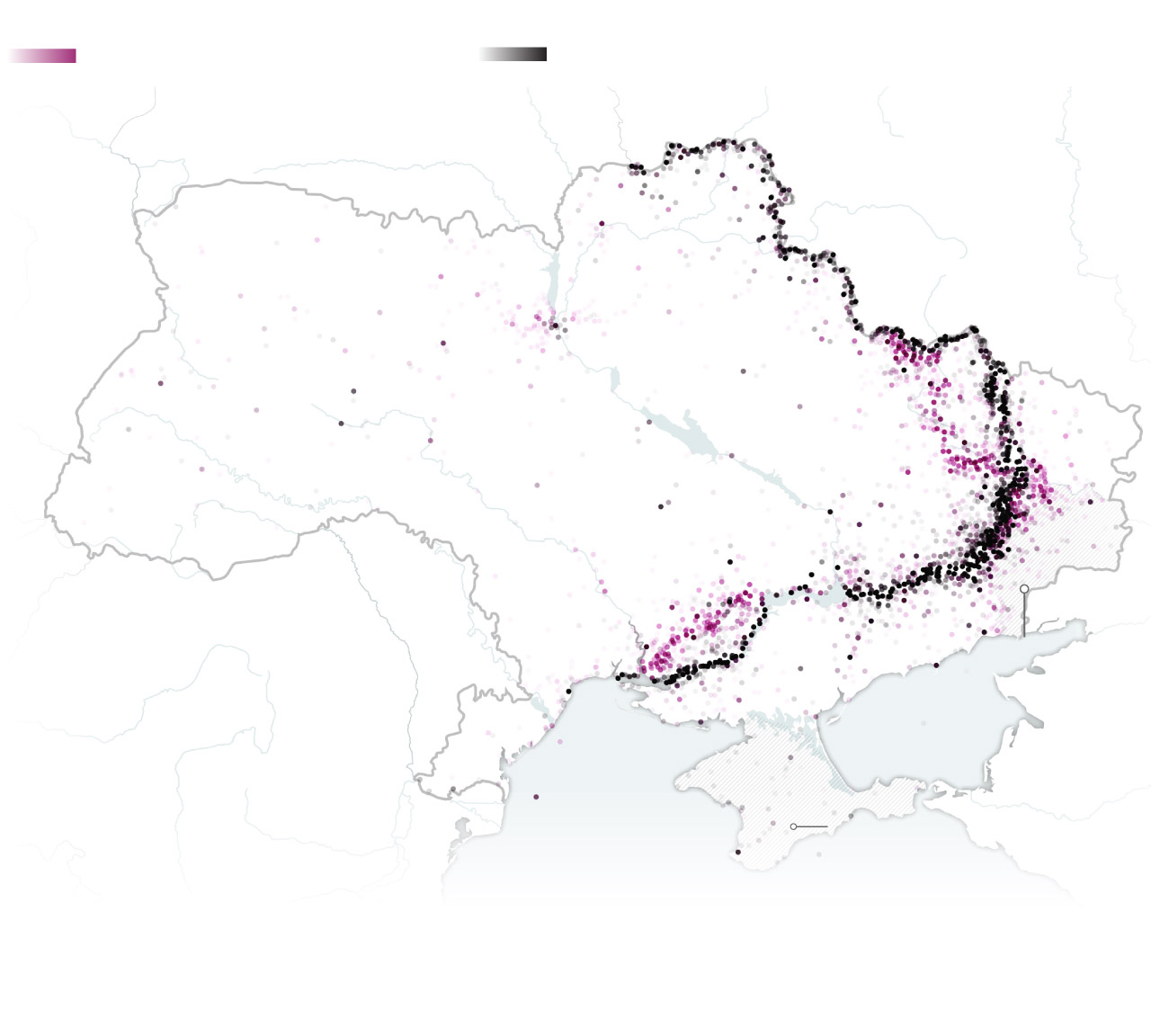
STRIKES IN THE 1ST YEAR OF WAR
Area held by
Russian-backed
separatists
since 2014
Illegally annexed
by Russia
in 2014
Note: Drone strikes, shelling, artillery, missile attacks, remote explosive, landmines and IED.
Data available from Feb. 24, 2022 to Feb. 16, 2024.
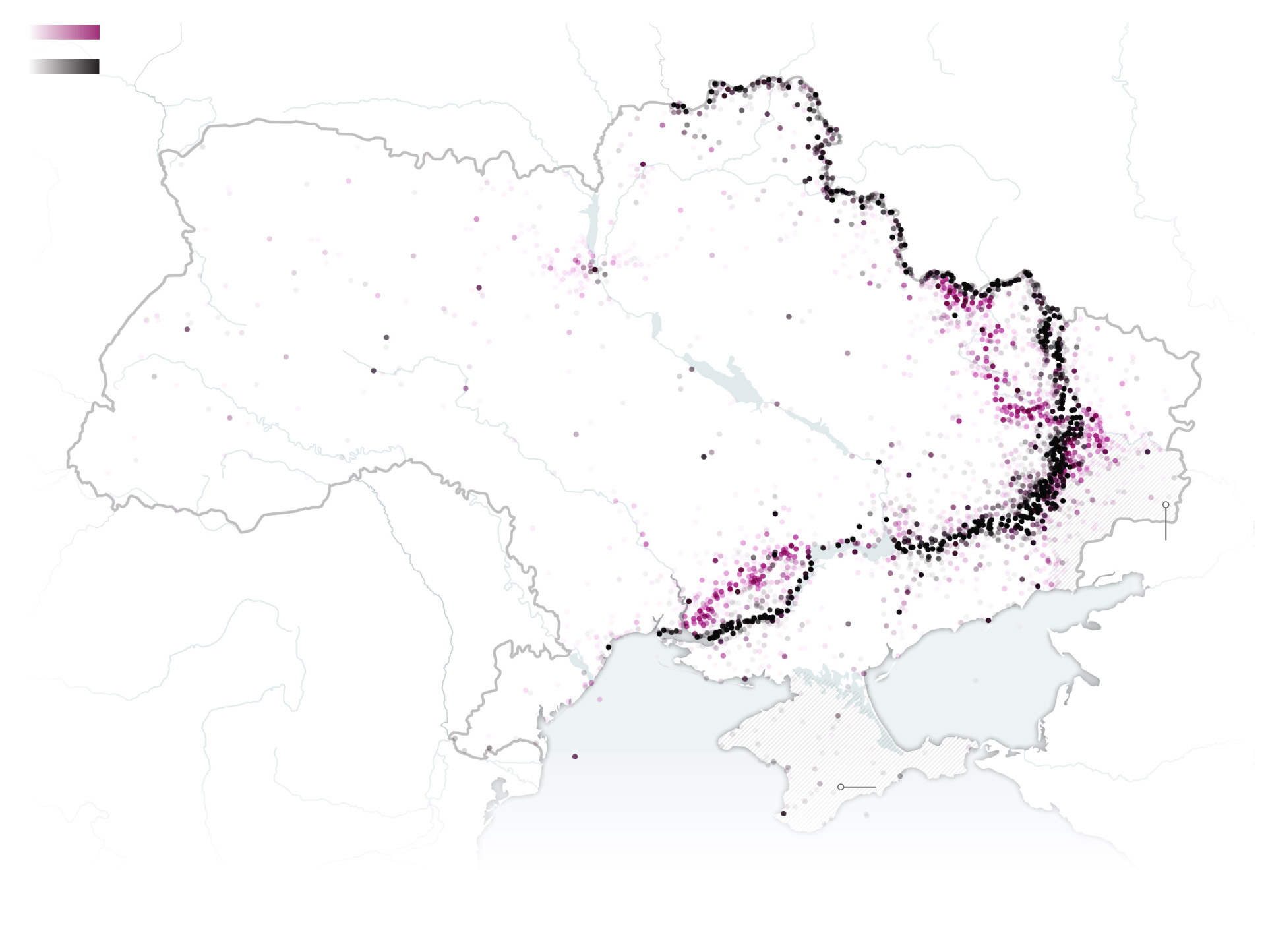
STRIKES IN THE 1ST YEAR OF WAR
Area held by
Russian-backed
separatists
since 2014
Illegally annexed
by Russia
in 2014
Note: Drone strikes, shelling, artillery, missile attacks, remote explosive, landmines and IED. Data available from Feb. 24, 2022 to Feb. 16, 2024.
But the fighting has intensified, according to the Armed Conflict Location and Event Data Project, which has been tracking such incidents throughout the war. The organization recorded 9,700 battle events — armed clashes, or the takeover or recovery of territory — in the second year of the war, a 32 percent increase compared with the first year. It said the increase was mainly due to increased fighting in the Donetsk and Zaporizhzhia regions, both of which Ukraine focused on in its failed counteroffensive.
The group recorded 22 territorial gains by Ukraine and 31 by Russia this past year, compared with 600 total in the first year of fighting.
The second anniversary of the war comes at a critical time, when fighting has morphed into a battle of attrition and Kyiv may run out of Western-provided ammunition as aid stalls.
“When you start running out of artillery, you need more troops,” said Max Bergmann, director of the Europe, Russia and Eurasia program at the Center for Strategic and International Studies. “You start putting more men on the front line and then start losing those men.”

In the early stages of the war, the focus of the
fighting was around Kyiv and in eastern Ukraine.
Russia captured the
city of Kherson on March 2.
There was intense fighting on the banks of the
Donets River and near Kharkiv.
Fighting
in the Mykolaiv region
north of Kherson.
In early September 2022, Ukraine retook
several settlements in the Kharkiv region.
Ukraine launched its Kherson
counteroffensive in August 2022.
Its forces retook settlements in the Mykolaiv
region and the city of Kherson, pushing the
front line to the Dnieper River.
The front line has remained without significant
changes since late 2022, with several small
towns near Donetsk and Zaporizhzhia becoming
the main battlegrounds.

In the early stages of the war, the focus of the
fighting was around Kyiv and in eastern Ukraine.
Russia captured the
city of Kherson on March 2.
There was intense fighting on the banks of the
Donets River and near Kharkiv.
Fighting
in the Mykolaiv region
north of Kherson.
In early September 2022, Ukraine retook
several settlements in the Kharkiv region.
Ukraine launched its Kherson counteroffensive
in August 2022. Its forces retook settlements
in the Mykolaiv region and the city of Kherson,
pushing the front line to the Dnieper River.
The front line has remained without
significant changes since late 2022, with several
small towns near Donetsk and Zaporizhzhia
becoming the main battlegrounds.
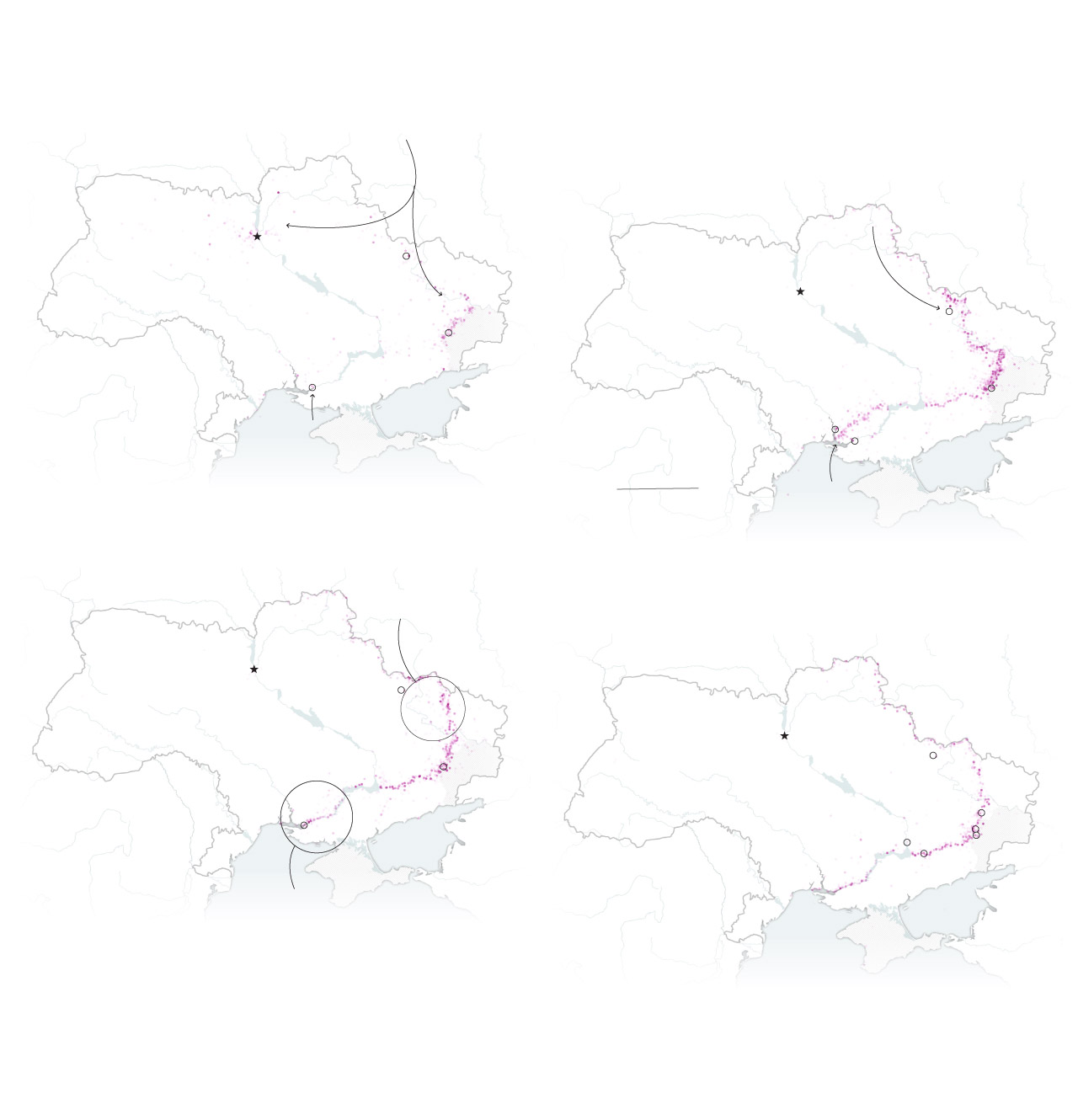
In the early stages of the war,
the focus of the fighting was around
Kyiv and in eastern Ukraine.
There was intense fighting
on the banks of the Donets
River and near Kharkiv
Russia captured the
city of Kherson on March 2.
Fighting
in the Mykolaiv region
north of Kherson.
In early September 2022, Ukraine retook
several settlements in the Kharkiv region.
Ukraine launched its Kherson counteroffensive
in August 2022. Its forces retook settlements
in the Mykolaiv region and the city of Kherson,
pushing the front line to the Dnieper River.
The front line has remained without
significant changes since late 2022,
with several small towns near Donetsk
and Zaporizhzhia becoming
the main battlegrounds.
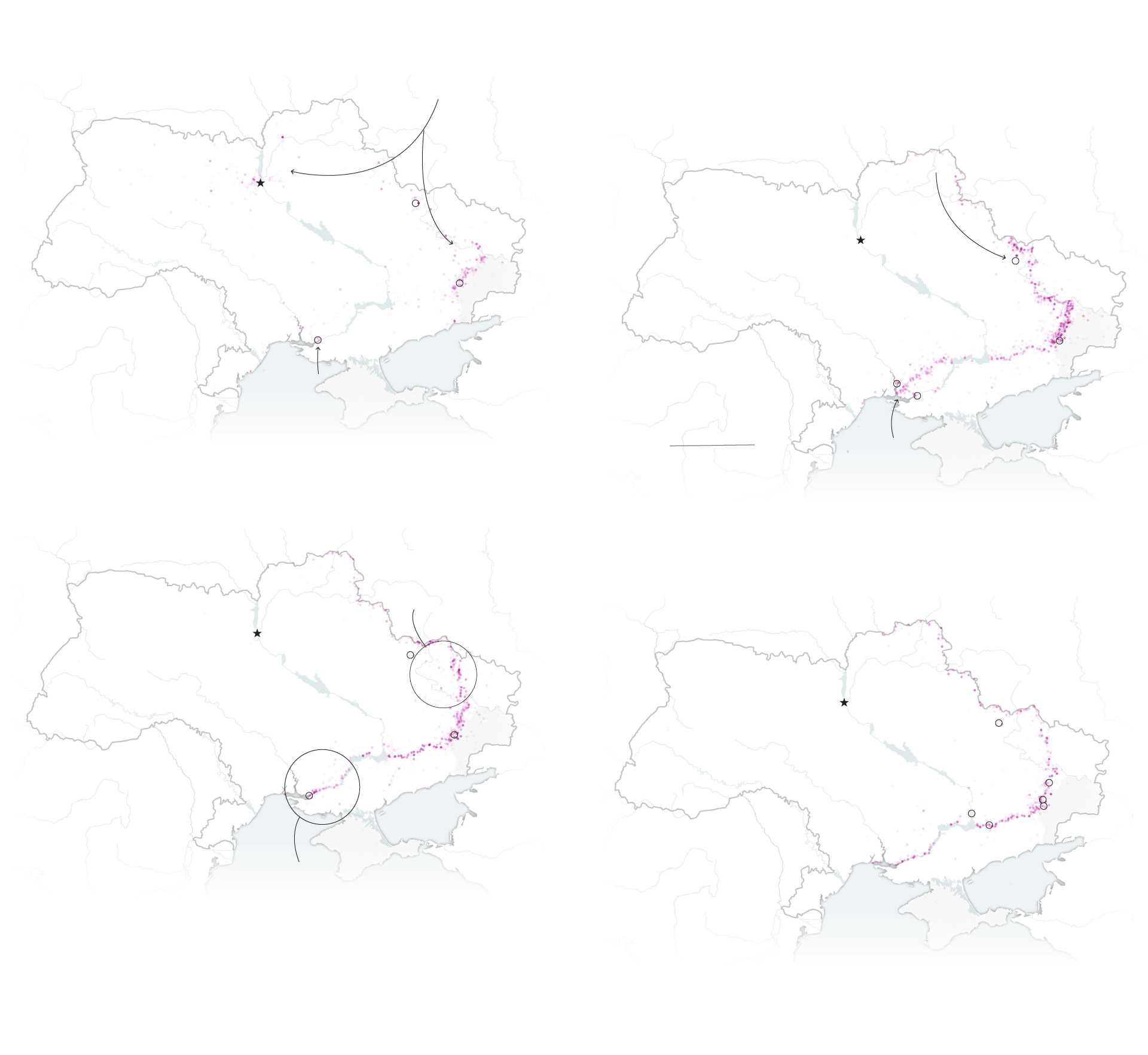
In the early stages of the war, the focus of the
fighting was around Kyiv and in eastern Ukraine.
There was intense fighting on the banks of the
Donets River and near Kharkiv.
Russia captured the
city of Kherson on March 2.
Fighting
in the Mykolaiv region
north of Kherson.
In early September 2022, Ukraine retook
settlements in the Kharkiv region.
Ukraine launched its Kherson
counteroffensive in August 2022. Its forces
retook settlements in the Mykolaiv region and
the city of Kherson, pushing the front line
to the Dnieper River.
The front line has remained
without significant changes
since late 2022, with several small towns
near Donetsk and Zaporizhzhia becoming
the main battlegrounds.
Russia has built heavy fortifications, including razor wire and trenches, hardening the front line.
It’s one of the reasons Ukrainian forces tried and failed to make progress during the summer counteroffensive.
Bergmann said that in the third year of the war, Ukraine would focus on rebuilding its infantry and replenishing ammunition stocks with the goal to “potentially to go on the offensive in 2025.” But that may be hard to achieve as the West’s desire to send more aid to the country wanes.
Moscow has already made incremental gains this year, seizing the eastern city of Avdiivka in mid-February.
“Ukraine didn’t do as much hardening of its line [in the second year] because it was hoping to break through.” Now, Bergmann said, after a year of focusing on fortifications, Russia appears to be pushing to gain more ground.

